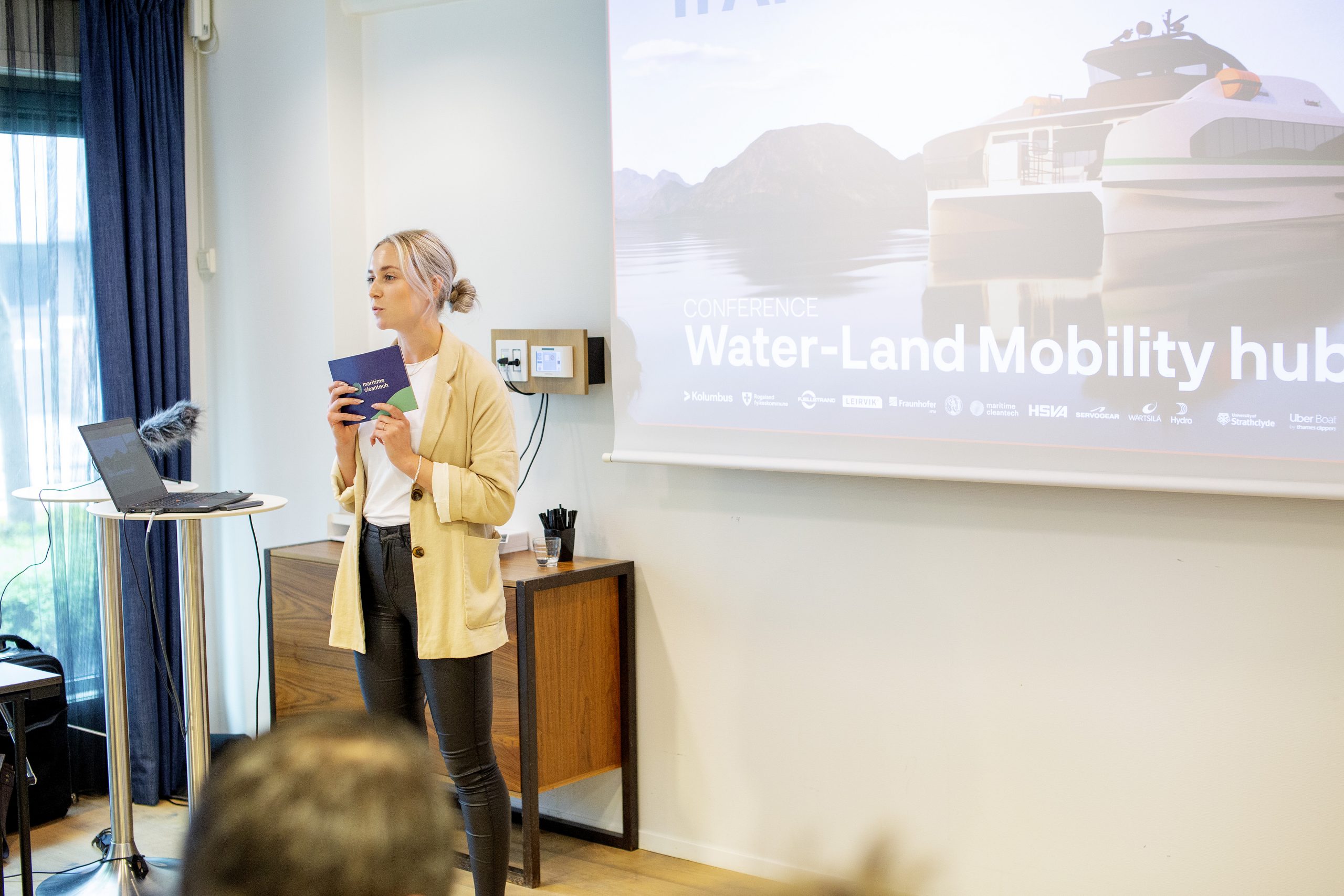As new low and zero-emission technologies for passenger transport become available, a new question arises: How do we integrate them to urban mobility systems?
The TrAM project gathered leading experts from around the world to address the planning and operation of mobility hubs as a component of sustainable and user-oriented mobility in cities. Resulting of ambitious climate targets and a need for more sustainable transport, the number of electric ferries such as “Medstraum” are expected to rise. In this hybrid event project partners and other stakeholders addressed the planning and operating of such mobility hubs from an international perspective.
The conference was opened by representatives from Kolumbus, the Stavanger-based mobility provider and operator of “Medstraum”. Participating in innovation projects such as TrAM has proved valuable for the continuous development of their mobility offer to passengers all over Rogaland County – and aligns with the regional strategy to achieve emission-free public transport.
To highlight ship transport as an integral part of future mobility, the conference was continued by Steinar Meling, CEO of Yago and Project Manager at Nordic Edge. Shifting the focus from a regional perspective, he elaborated on growing trends for all urban environments. Especially “ACES” technologies are expected to grow popular over the coming years; autonomous, connected, electric, and shared.
Following the broader perspective on how to integrate water into land mobility, four representatives from different European and American cities gave examples from their hometowns. They described what challenges and solutions they came across when developing their urban mobility systems, with a special focus on integrating waterborne transport. Both user acceptance, standardization, and “must-haves” for seamless configuration of intermodal mobility hubs were debated. Experiences from Stavanger, London, Kiel, and New York City were shared with the audience, who also had the chance to question all four speakers.
The conference was rounded off by a panel discussion with the city representatives. Here they got into the detail of what are the most important criteria for planning a mobility hub, and what government incentives must be in place to do so. The question of whether and when we will see fully autonomous passenger vessels was asked in the end; with answers ranging from very soon to not so much.
For a full view of the presentations and the panel discussion, check out the recording.
Integrating waterborne transport to urban mobility hubs
As new low and zero emission technologies for passenger transport become available, a new question arises: How do we integrate them to the urban mobility systems?
The TrAM project gathered leading experts from around the world to address planning and operation of mobility hubs as a component of sustainable and user-oriented mobility in cities. Resulting from ambitious climate targets and a need for more sustainable transport, the number of electric ferries such as “Medstraum” are expected to rise. In this hybrid event project partners and other stakeholders addressed the planning and operating of such mobility hubs from an international perspective.
The conference was opened by representatives from Kolumbus, the Stavanger based mobility provider and operator of “Medstraum”. Participating in innovation projects such as TrAM has proved valuable for the continuous development of their mobility offer to passengers all over Rogaland County – and aligns with the regional strategy to achieve emission free public transport.
To highlight ship transport as an integral part of future mobility, the conference was continued by Steinar Meling, CEO of Yago and Project Manager at Nordic Edge. Shifting the focus from a regional perspective, he elaborated on growing trends for all urban environments. Especially “ACES” technologies are expected to grow popular over the coming years; autonomous, connected, electric and shared. It will therefore be important to consider these when planning a mobility hub. Fabian Edel, Innovation Design Expert from Fraunhofer and project partner, adds to the question of designing the hubs:
–In general, communication is key when designing a mobility hub. That way, best practices, general recommendation on must-have, nice-to-have-services as well as technical requirements can be taught to mobility planners around Europe. Not only does that help show the problems occurring during the planning phase, but also ensures that the most important aspects are taken into account.”
Following the broader perspective on how to integrate the water to land mobility, four representatives from different European and American cities gave examples from their hometowns. They described what challenges and solutions they came across when developing their urban mobility systems, with a special focus on integrating waterborne transport. Both user acceptance, standardization, and “must-haves” for seamless configuration of intermodal mobility hubs were debated. Experiences from Stavanger, London, Kiel and New York City were shared with the audience, who also had the chance to question all four speakers.
–A big task we have in the TrAM-project is to make it viable and replicable for other cities in Europe. As every location is different, it is important to design a mobility interface that is specifically adapted to the conditions at hand. Nevertheless, certain methodological and modular practices can be applied, to make smart city planning more efficient, says Fabian Edel.
The conference was rounded of by a panel discussion with the city representatives. Here they got into detail of what are the most important criteria for planning a mobility hub, and what government incentives must be in place to do so. The question of whether and when we will see fully autonomous passenger vessels was asked in the end; with answers ranging from very soon to not so much.
For a full view of the presentations and the panel discussion, check out the recording.

